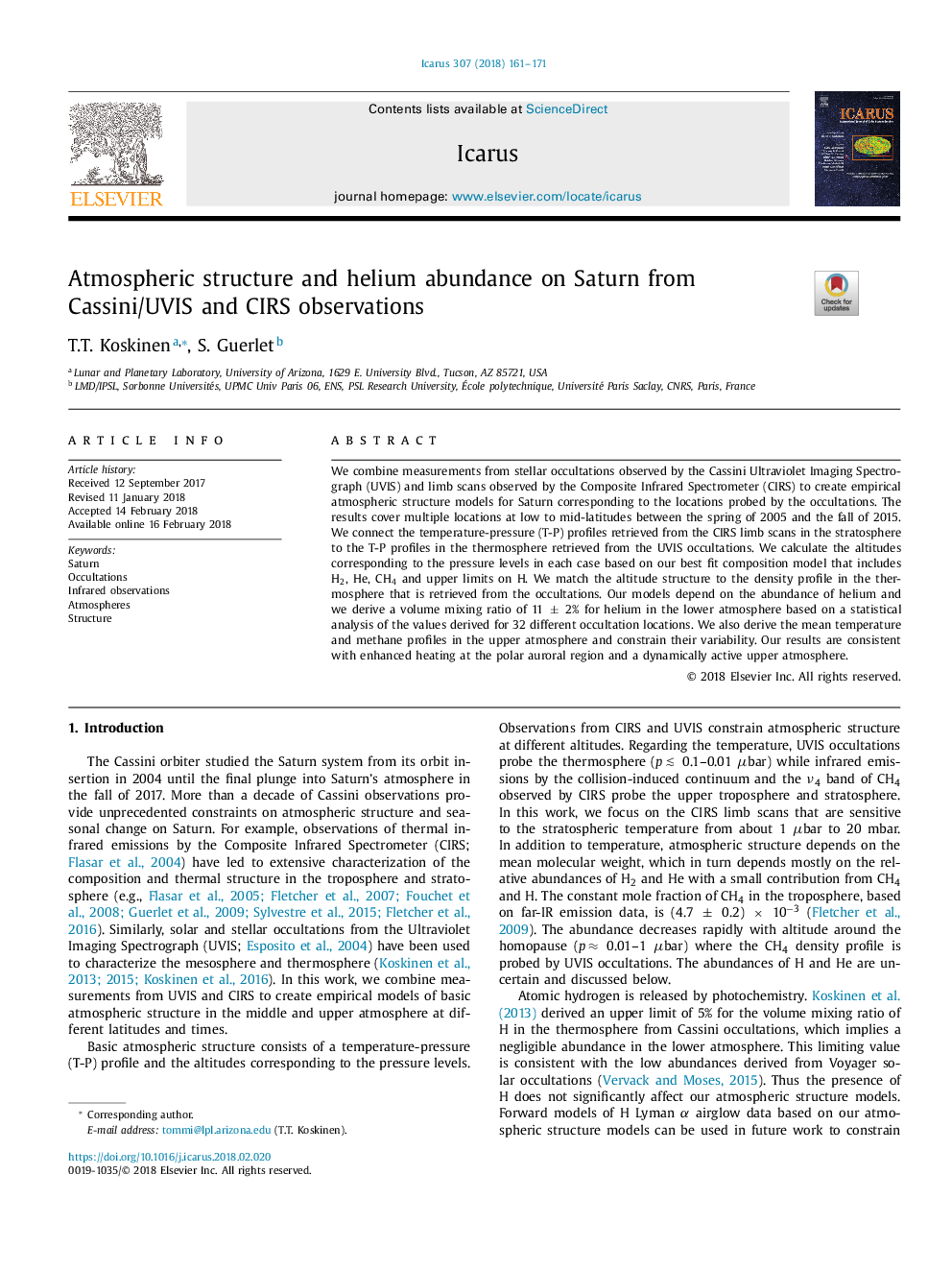| Article ID | Journal | Published Year | Pages | File Type |
|---|---|---|---|---|
| 8134216 | Icarus | 2018 | 11 Pages |
Abstract
We combine measurements from stellar occultations observed by the Cassini Ultraviolet Imaging Spectrograph (UVIS) and limb scans observed by the Composite Infrared Spectrometer (CIRS) to create empirical atmospheric structure models for Saturn corresponding to the locations probed by the occultations. The results cover multiple locations at low to mid-latitudes between the spring of 2005 and the fall of 2015. We connect the temperature-pressure (T-P) profiles retrieved from the CIRS limb scans in the stratosphere to the T-P profiles in the thermosphere retrieved from the UVIS occultations. We calculate the altitudes corresponding to the pressure levels in each case based on our best fit composition model that includes H2, He, CH4 and upper limits on H. We match the altitude structure to the density profile in the thermosphere that is retrieved from the occultations. Our models depend on the abundance of helium and we derive a volume mixing ratio of 11 â¯Â±â¯Â 2% for helium in the lower atmosphere based on a statistical analysis of the values derived for 32 different occultation locations. We also derive the mean temperature and methane profiles in the upper atmosphere and constrain their variability. Our results are consistent with enhanced heating at the polar auroral region and a dynamically active upper atmosphere.
Related Topics
Physical Sciences and Engineering
Earth and Planetary Sciences
Space and Planetary Science
Authors
T.T. Koskinen, S. Guerlet,
